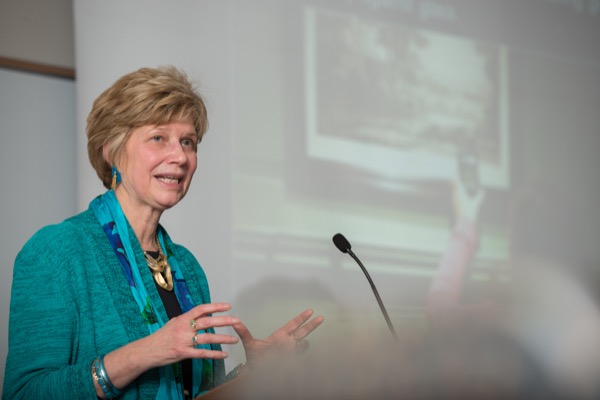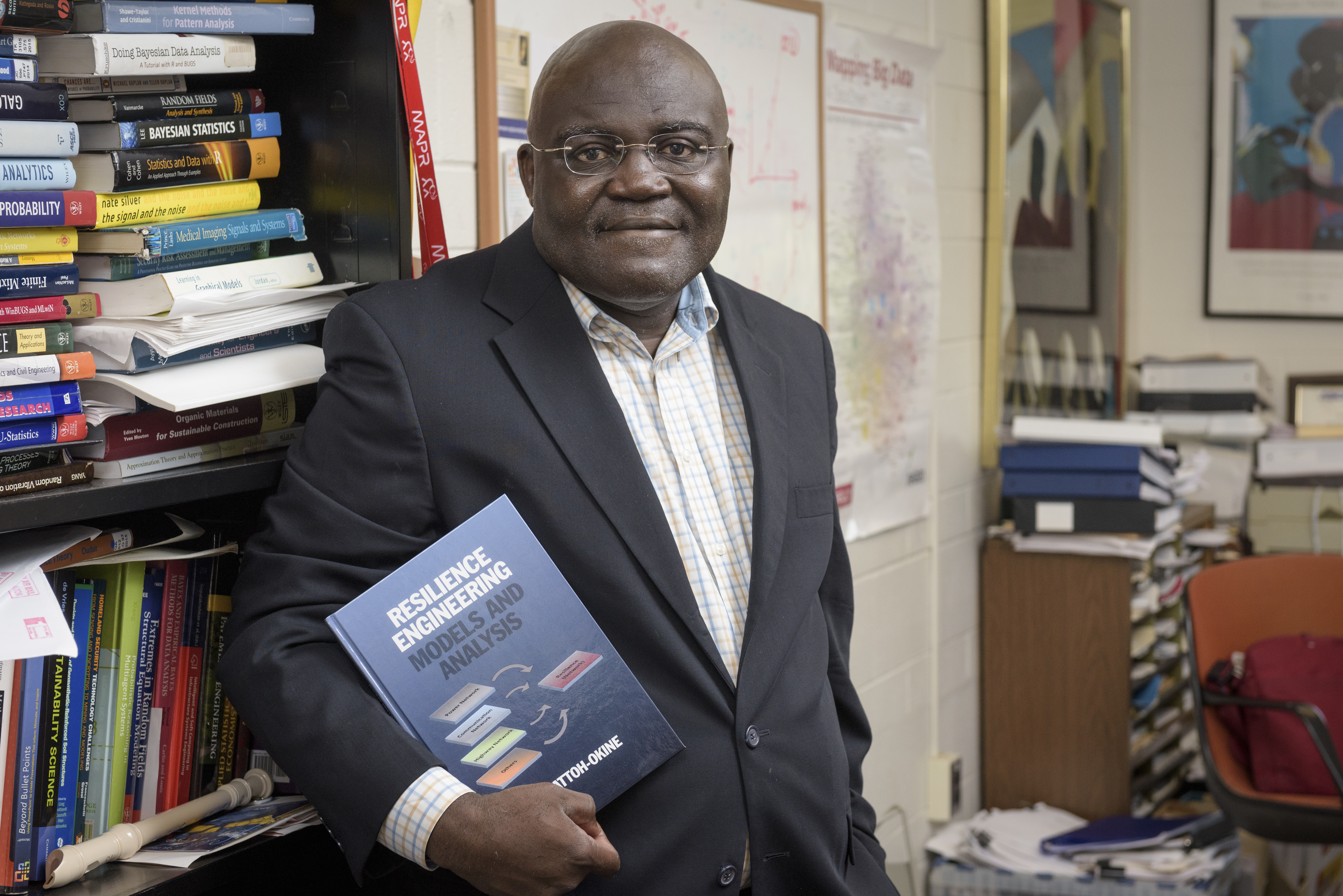
UDARF talk
Norris highlights global and local art conservation efforts
9:45 a.m., Dec. 16, 2014--Whether it’s saving family photos or restoring global cultural treasures, the University of Delaware’s Department of Art Conservation continues to garner global respect as a leader in art preservation expertise.
Debra Hess Norris, Unidel Henry Francis du Pont Chair in Fine Arts and chairperson of the department, discussed preservation efforts at home and abroad during a talk given to members of the University of Delaware Association of Retired Faculty at a luncheon held Tuesday, Dec. 2, at Clayton Hall.
People Stories
'Resilience Engineering'
Reviresco June run
“The art conservation department at UD offers an undergraduate degree, a master’s-level degree jointly sponsored with Winterthur Museum, Library and Garden, and a preservation studies doctoral program,” Norris said. “Our master’s degree in in art conservation is one of only four in the nation, and our doctoral program is unique in America and one of only a few doctoral programs in cultural heritage preservation worldwide.”
Norris noted that applicants to the master’s program have completed advanced undergraduate courses in several disciplines including chemistry, art history, studio art and anthropology, and prior to admission have logged hundreds if not thousands of hours of conservation experience working in museum and library conservation laboratories worldwide.
Important aspects of art conservation include in-depth documentation, non-destructive scientific analysis, conservation treatment and preventive conservation.
“Conservation treatment focuses on the reversible repair and restoration of cultural heritage and is a fundamental aspect — combined with connoisseurship and scientific study — of the work that our students do,” Norris said.
To help preserve art objects, a monthly clinic is offered by the Winterthur-UD Program in Art Conservation at Winterthur, where owners may learn more about the condition and long-term care of their art and antiques, Norris said.
“It’s not Antiques Roadshow, and while we can’t provide monetary appraisals, we can offer preservation advice and recommendations for the proper storage and handling of treasured heirlooms,” Norris said. “In some cases we identify selected projects for our graduate students to examine and conserve.”
The UD art conservation program jointly sponsored with Winterthur specializes in many areas, including the preservation of painting and painted surfaces, decorative and ethnographic objects, textiles, works of art on paper, library and archival holdings, furniture and photographic materials, Norris said.
Family photographs
The earliest photographs were ”direct positives” made without a negative and ranged from the daguerreotype introduced around 1840, to the tintype popular from 1860 through 1895, Norris said, adding, “These were one-of-a-kind images taken by placing a light-sensitive surface, such as coated glass, iron or silver-plated copper, into a camera and exposing it to light.”
While the process was very popular and exciting in 19th century America, it was time consuming and required people to pose for extended period of time, Norris said.
The most common photographic print process used from the early to the mid-20th century, was the silver gelatin print, which produced the black-and-white -- sometimes faded to a more brownish tone -- photographs that appear in many collections worldwide.
That was replaced by a range of color processes popular from the 1960s until the advent of digital photography, Norris said.
Color photographic prints present their own special preservation challenges including the requirement for long-term storage in cold storage vaults or freezers at temperatures of 40 Fahrenheit or lower, Norris said.
The great challenge for preserving color photographs is that the cyan, magenta and yellow dyes used in these processes tend to fade differentially over time, in the light and in the dark. These materials are inherently unstable, Norris said.
“One of the first cold storage vaults in the U.S. for housing photographs was at the John F. Kennedy Library,” Norris said. “The first president to be photographed in color was JFK. Now many museums and libraries have their own cold storage vaults for the preservation of early color and film-base negatives.”
Global conservation
Around the world, challenges faced in preserving photographs are due to natural or man-made emergencies and environmental conditions that include high temperatures, high relative humidity and pollutants.
A great resource for those seeking to maintain their photograph collections is Graphic Atlas, a website that presents an object-based approach for identification and characterization of prints and photographs.
Norris noted that the University’s art conservation program provides expertise around the world, with current and former students working in locations ranging from a 12th century Buddhist temple in Liaoning Province, China, to Scotland’s National Portrait Gallery and the Museum of New Zealand Te Papa Tongarewa, the national museum and art gallery in Wellington.
Global partnerships include the Iraqi Institute for Conservation of Antiquities and Heritage in Erbil, Norris said.
“We have been working in Iraq, and helped to establish this institute,” Norris said. “This has been a six-year project and we have trained over 200 Iraqis in the preservation of cultural heritage in partnership with many other leading organizations, including Winterthur and the Walters Art Museum. In many ways this focused education and training initiative serves as a model for the world.”
The Middle East Photographic Preservation Initiative, established in 2009 in partnership between the UD Department of Art Conservation and several institutions -- including the Arab Image Foundation, the Metropolitan Museum of Art and the Getty Conservation Institute -- recently received additional funding from the Andrew W. Mellon Foundation, extending the educational program through June 2017.
“This project is designed to build awareness about the importance and preservation of the rich photographic heritage across the Middle East,” Norris said. “We aim to engage local decision-makers and regional leaders in a sustained discussion on the preservation of cultural heritage in this region.”
Article by Jerry Rhodes
Photo by Kathy F. Atkinson








